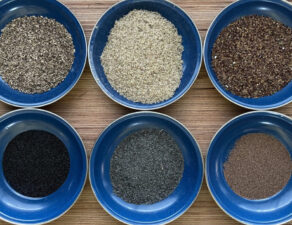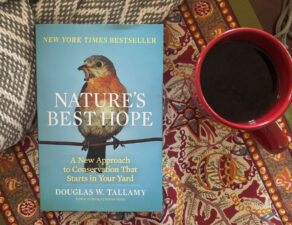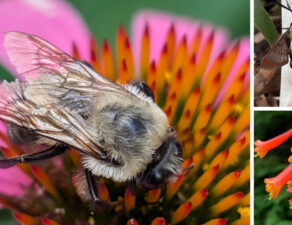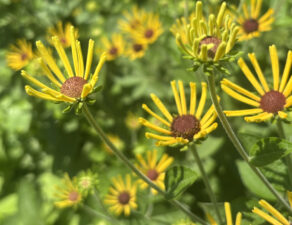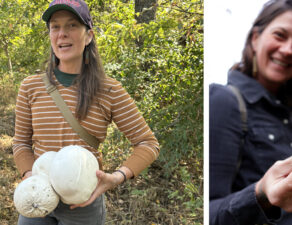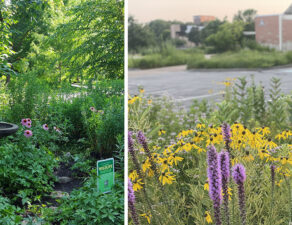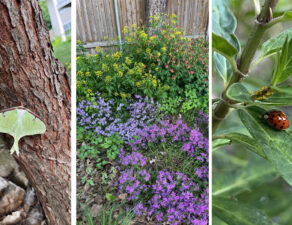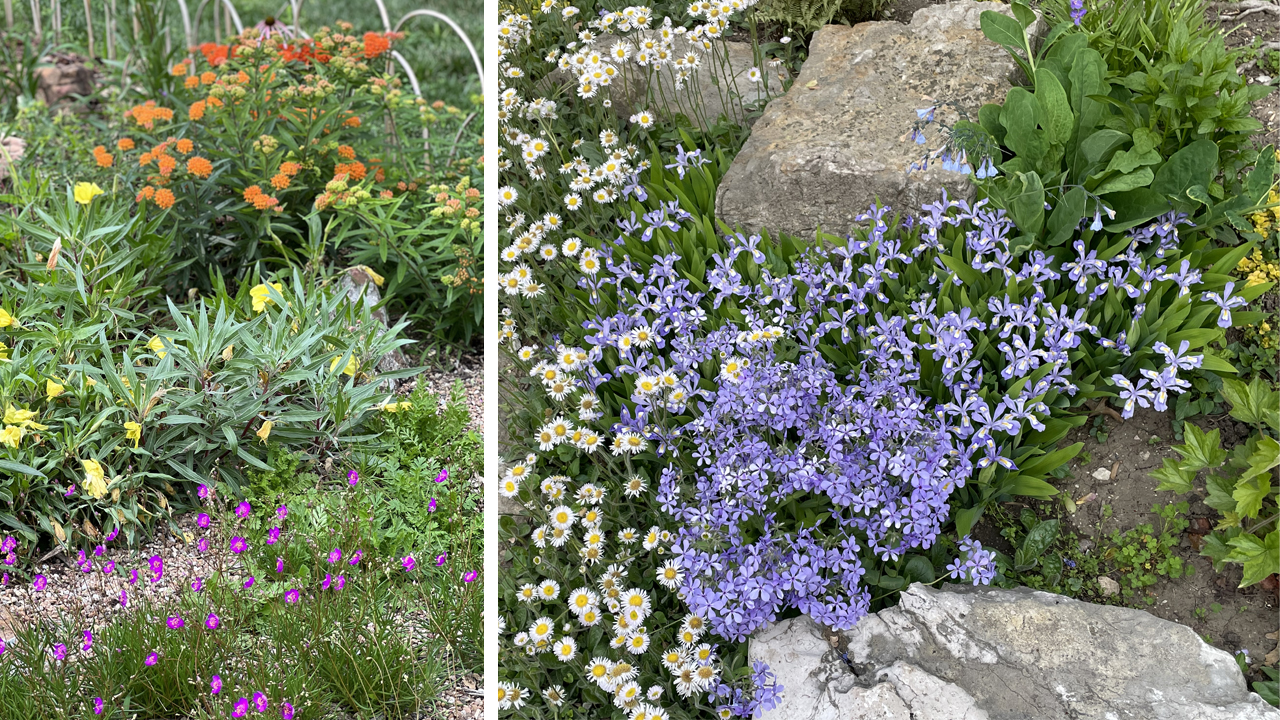
Photo credits: Pat Whalen (left), Cydney Ross (right)
By Josie Cummings
In partnership with Rockhurst University, Writing for the Environment students have authored this month’s Introduction to Native Plant Gardening Beginning / Refresher Garden Series article.
Even if you’re a first-time gardener, you can create a beautiful and functional native plant garden with a few simple tips.
Planning and preparation will help you find success, so start with a careful assessment of your site. This includes making note of the sunlight and moisture in the space, as well as taking careful measurements to create a drawing of your future garden. While you can represent your garden plan in any way you like, the easiest way is to draw your garden outline on graph paper, keeping a consistent scale on all your measurements.
Once you know the site conditions and size, you’ll be ready to choose plants that will thrive in your space. When considering the kinds of plants you will plant, it helps to approach the garden in three layers. The first layer is the structural layer which includes shrubs, small trees, and tall statement plants. Next is the seasonal layer which provides blooms and color throughout the year. Finally, the third layer is the ground cover layer which is sometimes also called “green mulch” because groundcovers use the space and fill in and around plants. This decreases the need for weeding, protects soil, buffers temperature changes, and creates a healthier ecosystem in your yard.
One question you may have is how to find what plants are native to your area. Your local native plant nurseries and native plant organizations are a great resource for you. Check Deep Roots website for a list of native plant resources. Websites that allow you to filter by your light and moisture conditions are especially helpful as you narrow down the list to find the plants that will be happiest in your new garden.
From this list, you may want to create a plant palette including all the plants you will include in your garden in a table. You can do this handwritten, or you can create a spreadsheet. The goal is to have the ability to look at your list and to see each plant’s height, spread, color, and bloom time. Knowing when your plants bloom helps you create companion plantings as well as have something blooming all season.
Doing your research is important and can be fun – but don’t forget that the most helpful thing as you’re learning to design is to get outside and get inspired. Go hike in natural areas, visit other native gardens, and visit native nurseries. Observe plants not just when they’re blooming but when they’re emerging in the spring, going dormant in the fall, or standing dry over the winter. Start to become familiar with the rhythm of the plants, the colors of the seasons, and you’ll feel a lot more confident being able to echo those patterns and recreate them in your designs.
If you’ve ever watched HGTV you may already have a sense of some of the elements that make a design visually pleasing. We can apply a lot of those to the garden as well. Consider the following tips as you begin to add plants to your design:
- Start with a focal point – a tree, shrub, garden art, or even architectural feature of your home.
- Place plants in groups of the same species for visual effect.
- Use odd numbers – plant clumps of three, five, or seven plants.
- Include organic and geometric shapes such as curves and sweeps.
- Remember to place taller plants in the middle or back of the bed.
As you begin to draw the plants in the design, you can use any method that works and makes sense to you. This might be a set of symbols, but you can also use circles or a simple drawing of a plant. Remember to keep it to the same scale you used for the outline, so you have an idea of how much space they take up. The blank page can be intimidating, so just pick one plant and place it; then pick a companion.
Planting and growing a garden is about creating a space that you love and creating a piece of art in cooperation with the Earth. Take a deeper dive into the process by watching episode four of our Beginner/Refresher Native Plant Gardening Webinar Series on the Deep Roots website.
